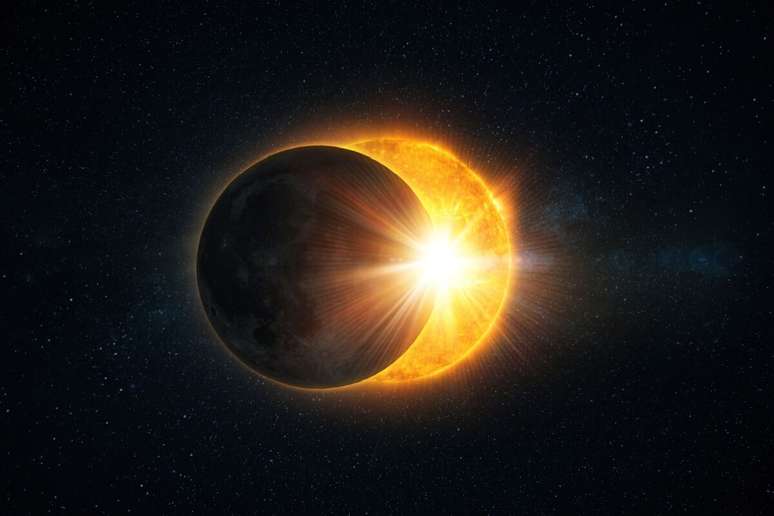The eclipse will be seen in an annular shape in a narrow band spanning the Pacific Ocean, the Atlantic and the southern tip of South America
Summary
The annular eclipse of the Sun can be seen in Brazil this Wednesday (2)
This Wednesday (2) at The annular eclipse of the Sun can be seen from the sky in Brazil; the event occurs when the Moonwhen it passes between the Earth and the Sun, it does not completely cover it due to its smaller apparent diameter. The result is impressive “ring of fire” in the skywhich promises to delight observers.
The eclipse will be seen in an annular shape in a narrow band across the ocean Pacific, the Atlantic and the southern tip of South America, covering parts of Chile and Argentina.
In Brazil, the The phenomenon will be partially visible in the southern, south-eastern and central-western states, with greater intensity in the more southern areasas astronomer Josina Nascimento, of the National Observatory, explains (ON/MCTI), in a statement. “In the south of the country, the eclipsed area will be larger,” Josina said.
What is an annular solar eclipse?
In an annular eclipse, as in a total eclipse, the The Moon aligns between the Earth and the Sunblocking some sunlight in a specific region of the planet. When the Moon is at apogee, at the farthest point of its orbit, its projection in the sky appears smaller, and therefore does not completely cover the Sun, creating the ring of fire. On average, solar eclipses occur twice a year and can be total, partial or annular.
“This type of eclipse occurs when the Moon is at its apogee, the farthest point of its orbit from Earth, or near this point, making it appear smaller than the Sun in the sky. The frequency with which solar eclipses occur is on average twice a year, and can only be partial, annular or total. The last annular solar eclipse occurred on October 14, 2023 and was observed in part of Brazil,” explains Josina.
How to observe the eclipse
For those who want to observe the eclipse safely, it is essential to find a place with good visibility to the west, since the event will take place close to sunset. In Rio de Janeiro, for example, the partial eclipse will begin at 5:01 pm, reach its peak at 5:42 pm, and the Sun will set at 5:52 pm.
The ON astronomer issues an important warning: “Never look directly at the Sun without adequate protection. Dark glasses, x-ray plates or other improvised filters are not safe. Use only certified filters, such as special glasses for solar observation or 14 tone welder glasses.”
For those who cannot follow the phenomenon in person, the National Observatory will host a live broadcast on its YouTube channel. The initiative is part of the “Sky in Your Home: Remote Observation” project, in collaboration with astronomers and Time and Date, an international organization that monitors astronomical phenomena.
Watch the live broadcast on connection.
Source: Terra
Rose James is a Gossipify movie and series reviewer known for her in-depth analysis and unique perspective on the latest releases. With a background in film studies, she provides engaging and informative reviews, and keeps readers up to date with industry trends and emerging talents.


![Pre -Si Grand Soleil: Summary of Episode on Tuesday, October 14, October 14, 2025 [SPOILERS] Pre -Si Grand Soleil: Summary of Episode on Tuesday, October 14, October 14, 2025 [SPOILERS]](https://fr.web.img6.acsta.net/img/90/06/9006f8922e8bfda0a3290f9a6ff3fa74.jpg)




